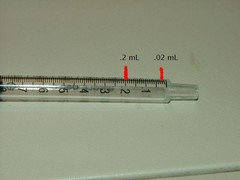Cats & ear mites
jonereb
12 years ago
Featured Answer
Comments (19)
jonereb
12 years agosylviatexas1
12 years agoRelated Professionals
Saint James Architects & Building Designers · Bel Air North Interior Designers & Decorators · New Providence Interior Designers & Decorators · Carlsbad Furniture & Accessories · Greer Furniture & Accessories · Topeka Furniture & Accessories · Fair Lawn Furniture & Accessories · Wakefield Furniture & Accessories · North New Hyde Park Cabinets & Cabinetry · South Riding Cabinets & Cabinetry · Sunrise Manor Cabinets & Cabinetry · Branford Flooring Contractors · East Brunswick Flooring Contractors · Fishers Flooring Contractors · Ocoee Flooring Contractorscalliope
12 years agomichelle_phxaz
12 years agojonereb
12 years agoMeghane
12 years agojonereb
12 years agojeanie_beth
12 years agolzrddr
12 years agoemaansana18
8 years agoSaltiDawg
8 years agosylviatexas1
8 years agoSaltiDawg
8 years agolast modified: 8 years agoemaansana18
8 years agotete_a_tete
8 years agobuddycuddlerband
7 years agoAA BP
2 years agoStax
2 years agolast modified: 2 years ago
Related Stories

SHOP HOUZZHouzz Products: Create a Cat Heaven at Home
Show kitty you care and keep your style too with fun and cozy cat beds, perches, trees and decor
Full Story
PETS12 Stylish Solutions for Ugly Cat Furniture
Bland beige post unhappily marking your living room territory? Scratch that with rakish kitty condos, perches and staircases
Full Story
FUN HOUZZ6 Reasons Every House Needs a Cat
Everyone should have a feline fixture as part of their home decor. Here's why
Full Story
THE HARDWORKING HOMEA Laundry Makes Room for a Diva Cat
A South Carolina laundry room was designed to be sophisticated and functional, but when a kitten arrived, whimsy emerged
Full Story
PETSHouzz Pets Survey: Who Rules the House — Dogs or Cats?
New data shows that pets make people happy, and pet owners love spending big to return the favor
Full Story
HEALTHY HOMEWhat You Need to Know About Dust and How to Fight It
Breathe easier with these 10 tips for busting mites, dander and other microscopic undesirables
Full Story
FEEL-GOOD HOME6 Design Ideas for Happy Pets
Keep your dog or cat feeling safe and in high spirits, and you'll all feel more at peace. Here's how
Full Story
LIFESimple Pleasures: Put Your Records On
It’s cool to just relax on a recliner, delving deeply into tunes? Now that’s music to our ears
Full Story
PETSSee a Deluxe 'Catio' Built for Feline Fun
Sixteen lucky cats get the run of a protected outdoor patio with ramps, steps and even a koi pond
Full Story
HOME TECHFacebook Meets Fido: Pet Connections for the Digital Age
Three new products let you communicate with your dog or cat while you're at work
Full StoryMore Discussions









Meghane